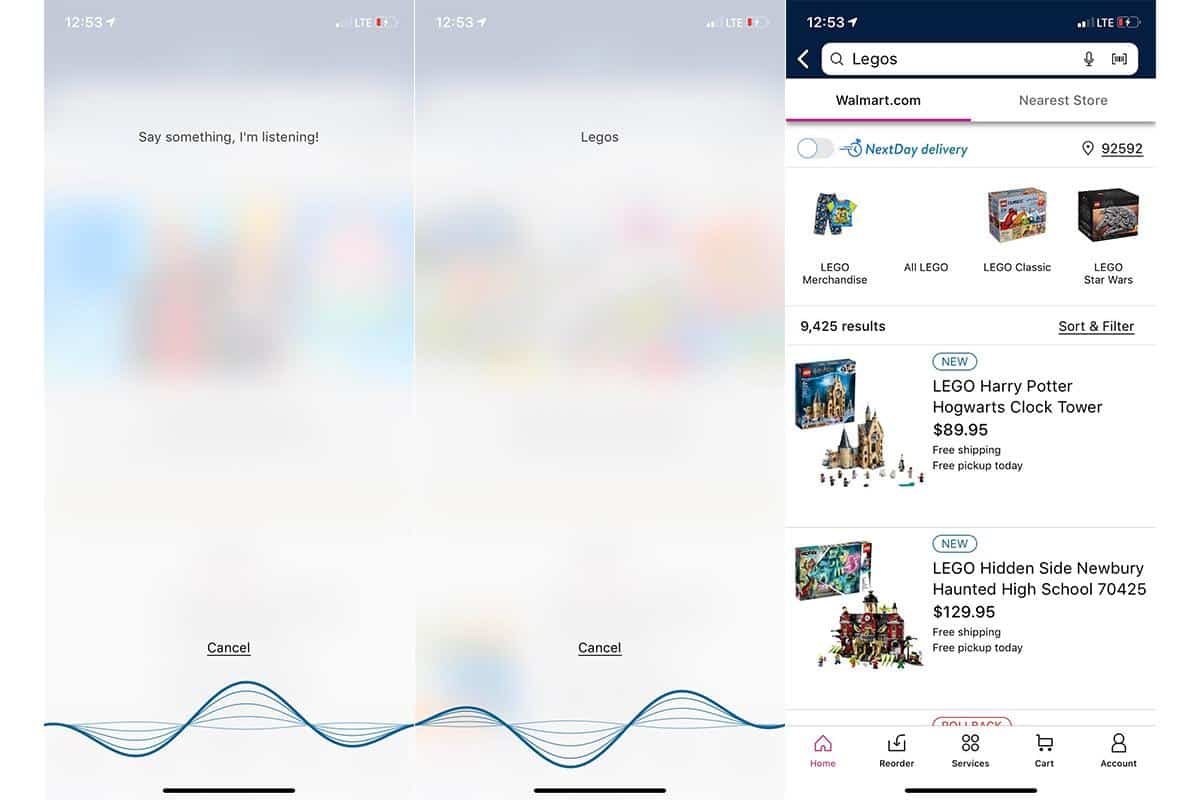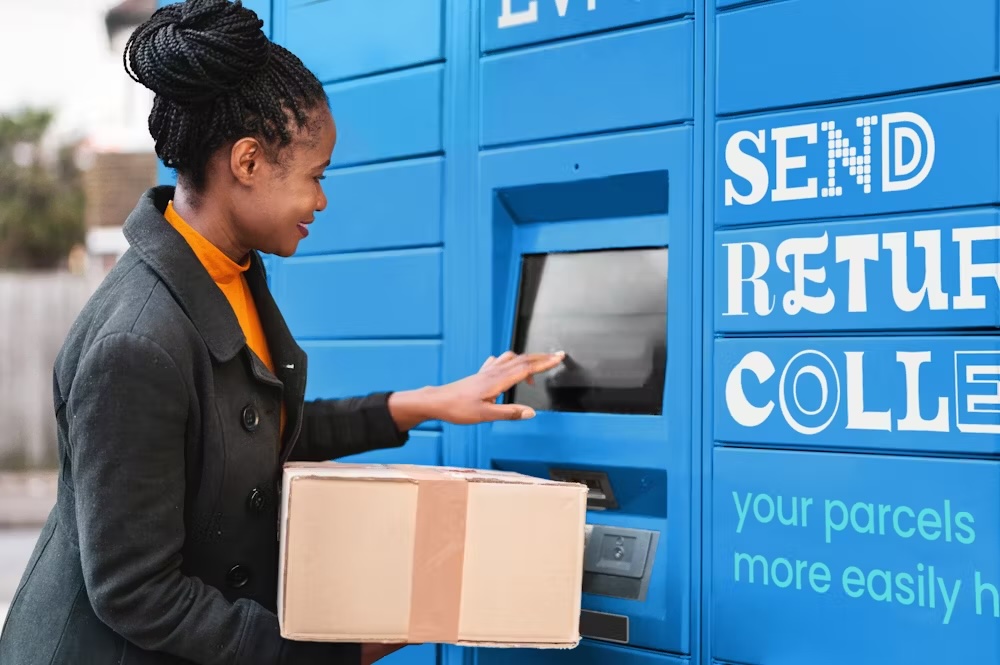Voice commerce, also referred to as v-commerce, enables customers to make purchases using their mobile devices and voice commands. Instead of manually typing keywords in a search bar, users can tell the system what they are looking to purchase. It’s another way companies, like Walmart in the example below, are using a smartphone’s native capabilities to enhance the user experience.
As of now, people are still buying more on their desktop computers, which indicates v-commerce is a long ways off from adoption when mobile shopping sessions still frustrate users. Further, lack of search features, product comparison and product images, however, remain barriers to voice commerce gaining larger adoption.
V-commerce is a capability of many virtual personal assistants (VPAs) such as Amazon Echo’s and Google Home assistants. In recent years these smarthome devices have become increasingly popular. As of January 2019, 66.4 million U.S. adult consumers owned at least one smart speaker. Sources estimate that 16.9 million smart displays will be sold in 2019, compared to around 119 million smart speakers without embedded displays.
Today we can order an Uber, food and shop online without even touching a phone. You can do what you used to need for browsing different pages for, with just a voice command. With the Pizza Hut skill for Alexa, you can browse and order from a selected menu, a saved favorite or repeat a past order. All without even lifting a finger.
However, many people distrust these devices, especially when it comes to making purchases online. Forty-three percent of consumers cite a lack of security features as the number one reason they won’t make more purchases via voice-enabled devices according to Episerver.
Difficulty searching for and comparing products were also cited as barriers to increased voice purchases. A simplified method of payment, for example, has yet to make its way to digital assistants. As voice commerce is difficult to navigate while making a purchase, users move to another channel. It is more widely used in a research capacity than a shopping one.
We have all been disappointed by ordering a product online, only to find that the delivered product does not match the description or the digital image. Be that as it may, it is a lot to ask the retailers to perfect this experience on a relatively new channel: voice commerce. Smart devices lack some key features for online shopping like product images, product comparisons and product search without relying on visual elements to help people “see.”
Where voice commerce has seen success, is a repeat purchase. Customers who have purchased a product via any other means before are comparatively far more comfortable purchasing the same product again in the future through voice commerce. Examples of such products are housewares, home goods, food & grocery, etc. “Re-order me Bounty paper towels” takes less guesswork from everyone than “Find me maroon pants in my size.” It is not far off though.
To offset the shortcomings of voice commerce for now, retailers and brands should focus more on the traditional channels that involve product discovery, purchases and delivery. These channels are social media, digital commerce websites and email marketing. When an innovation such as voice commerce does not show expected promise, the traditional channels can be improved as a backup, instead of being neglected.
Generally, consumers are uncomfortable and unfamiliar with the voice technology at hand for complete end-to-end purchases. There’s a huge communication gap, and many people prefer the human effect for a better understanding. Nevertheless, there are some people who don’t want to depend on technology.
Older generations are either indifferent or less likely to purchase via voice commands. Whereas, younger consumers either prefer or are indifferent according to our 2019 B2C commerce survey. In a nutshell, people will generally try new technology that makes their lives more convenient.






